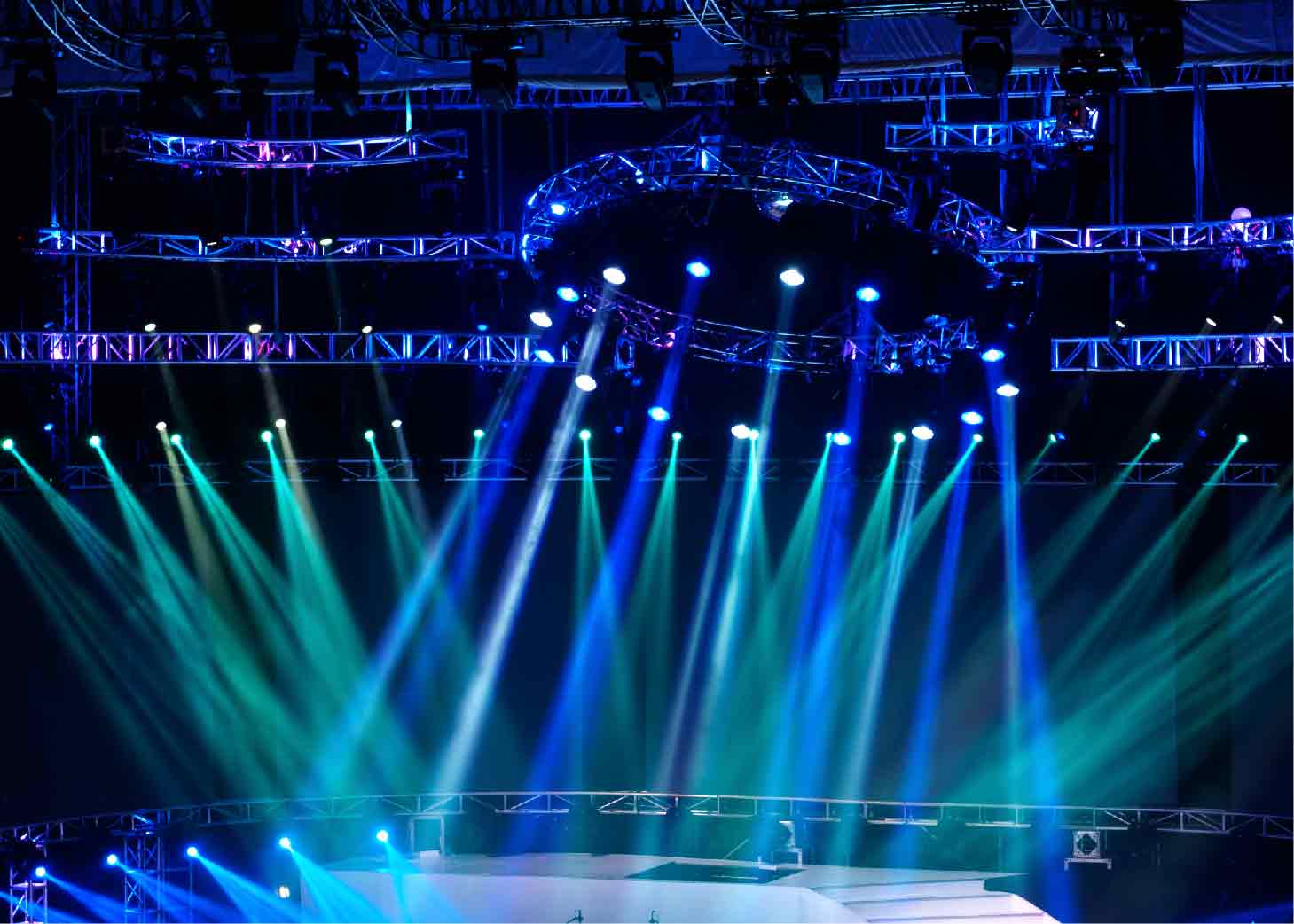
Conference Room Design Guide for AV Professionals
Today’s conference rooms are the hub of organizational collaboration and productivity. Their thoughtful design brings together acoustics, lighting, technology, and layout to support clear communication and creative thinking. This article explores the essentials of modern conference room design and the trends that shape its future. Read on to see how to build flexible, scalable spaces that meet today’s demands and anticipate tomorrow’s.
The Importance of Conference Room Design
The way a conference room is designed shapes how team members within an organization communicate, collaborate, and make decisions. A well-designed space facilitates collaboration, whether team members are in the room or participate remotely, facilitating engagement, connection, and team efficiency.
How Design Impacts Collaboration and Productivity
Collaboration thrives when teams can share ideas easily, see content clearly, and hear every word that’s spoken without distraction. When implemented effectively, the following design elements help create that environment:
- Sightlines and Visibility: Ensure participants have a clear view of displayed and projected content.
- Technology Access Points: Provide accessible HDMI ports, wireless content sharing, and charging stations to prevent delays.
- Spatial Arrangement: Use circular or U-shaped seating configurations to encourage dialogue and participation.
- Psychological Comfort: Ensure comfortable seating, proper temperature control, and thoughtful aesthetics to keep the focus on the discussion.
The Role of AV in Modern Conference Rooms
Effective conference room design goes beyond technology alone to create an environment where communication flows, collaboration feels natural, and presentations look and sound professional. An effective design approach minimizes distractions and enhances the user experience. Key aspects that AV designers need to consider in planning conference room design include:
- Remote Participation: Provide clear audio and visual access for virtual attendees.
- Content Sharing: Support multiple devices and platforms.
- Professional Management: Maintain presentation excellence for a professional impression.
- Technology Integration: Keep systems intuitive for smooth collaboration.
- Intelligent Microphones: Automatically capture active speakers.
- Smart Cameras: Auto-frame participants for optimal video presentation.
- Display Quality: Ensure sharp visuals in any lighting.
Trends in Conference Room Design for 2025
Driven by technology and shifting workplace trends, conference room design ideas are evolving at a faster pace than ever. Staying abreast of new developments allows AV professionals to create spaces that are relevant, engaging, and sustainable. Key trends shaping conference room design include the utilization of:
- Hybrid-First Architecture: Employs the use of multiple camera angles, spatial audio, and life-size displays of virtual attendees so remote participants feel like equal stakeholders.
- AI-Enhanced Experiences: Automatically optimizes cameras, audio, noise reduction, and generates real-time transcriptions and summaries.
- Natural Design Elements: Uses natural materials, plants, and natural shapes to reduce stress and boost focus.
- Wellness-Centric Features: Ensures ambient lighting, air quality monitoring, and acoustic treatments that support mental well-being.
- Sustainability Integration: Utilizes energy-efficient displays and automated power management systems to minimize waste and lower costs.
Key Considerations for Conference Room Design
Successful conference room design starts before any equipment decisions are made. Every detail, from room dimensions and acoustics to lighting and ergonomics, shapes how well team members communicate, collaborate, and stay engaged. Thoughtful planning ensures that every meeting looks, feels, and sounds professional.
Room Size and Layout
The physical size and configuration of a room directly influence AV choices. A 10-person huddle room demands a different solution than a 50-person auditorium. Designers should account for proportional scaling of displays and speakers, optimal viewing distances (e.g.,1.5–2.5 times the display diagonal), traffic flow patterns, and multipurpose flexibility. Movable furniture and reconfigurable AV systems enable the room to adapt to the need for workshops, presentations, video calls, and social gatherings.
Acoustics and Soundproofing
High-quality audio separates professional spaces from amateur setups. Key considerations include reverberation control using acoustic panels or specialized ceiling tiles, isolation from external noise such as HVAC and hallway traffic, internal noise management from equipment, and prevention of standing waves with angled surfaces, diffusion panels, or bass traps. Addressing these factors ensures clear, intelligible conversation and high-fidelity audio recording.

Lighting and Its Effect on AV Systems
Lighting affects video quality, display visibility, and participant comfort. Effective design incorporates preset scene controls for different activities, color temperature management to align with circadian rhythms, glare elimination on displays and camera frames, proper facial illumination using diffused LED panels, and ambient light control with motorized shades to handle daylight variability.
Ergonomics and Comfort for Participants
A comfortable, ergonomic design keeps participants focused throughout long meetings. AV designers should prioritize the use of high-quality seating with lumbar support, adjustable heights, and proper cushioning; standard or adjustable table heights with sufficient legroom; displays positioned at eye level (e.g., 42–48 inches from the floor) to prevent neck strain; and accessible climate controls to ensure the room remains comfortable for all attendees.
By addressing these foundational elements, AV professionals can create spaces that are not only functional but also future-proof.
AV Technology in Conference Room Design
Technology is the most visible, and often the most essential, element of conference room design. The right combination of displays, audio, video conferencing tools, and control systems creates a seamless environment for collaboration, engagement, and professional presentations. Key components include:
Display Solutions
Conference rooms rely on a range of display equipment that includes:
- Flat Panel Displays: Provide bright, accurate visuals with LED screens (e.g., 55”–98") for controlled lighting and close viewing.
- Laser Projectors: Deliver 4K resolution and massive screen sizes (e.g., 200"+) for auditorium-scale impact.
- Interactive Displays: Enable collaborative annotation, brainstorming, and design reviews through touch-enabled panels.
- LED Video Walls: Showcase high-brightness, seamless visuals for large, high-impact spaces.
Audio Systems
Clear communication depends on properly designed audio components, including:
- Microphones: Capture clear sound with ceiling arrays, boundary mics, or lapel/headset options.
- Speakers: Deliver balanced audio through in-ceiling or architectural loudspeakers with phase-aligned placement.
- Digital Signal Processors (DSPs): Process echo cancellation, noise reduction, gain control, and feedback suppression.
- Networked Audio (Dante): Stream sound efficiently with simplified wiring, flexible routing, and scalable, future-ready systems.
Video Conferencing Tools
Effective hybrid collaboration requires reliable tools and architecture, including:
- Cameras: Frame participants accurately with PTZ or ultra-wide AI-powered cameras and 4K clarity.
- Platform Compatibility: Support Zoom, Teams, Meet, and other platforms natively for full feature access.
- USB vs. Networked Solutions: Optimize connectivity with USB for small rooms or networked appliances for advanced setups.
- Content Sharing: Share any participant’s content instantly with wireless presentation systems.
Control Systems
Various control systems simplify smooth operations and unify room technology. These include:
- Touch Panels: Operate systems intuitively via wall-mounted or tabletop interfaces with customizable layouts.
- Room Scheduling Integration: Streamline booking by displaying availability and syncing with calendar platforms.
- Wireless Control Apps: Adjust volume, switch sources, and control lighting remotely via smartphones or tablets.
- Voice Control: Enable hands-free operation with Alexa, Google Assistant, or custom commands.
When integrated thoughtfully, various AV technologies can transform conference rooms into efficient, engaging, and future-ready spaces where every participant, whether onsite or remote, can contribute fully.
Designing for Flexibility and Scalability
Forward-thinking conference room design ideas emphasize adaptability and accommodate various working styles, emerging technologies, and changing team structures without the need for costly renovation. Key features that drive this flexibility include modular furnishings, wireless connectivity, and scalable solutions.
Modular Furniture and Configurations
Modular approaches enable the space to adapt to diverse meeting types and evolving organizational needs. Key elements include:
- Mobile Tables and Seating: Enable rapid reconfiguration with wheeled tables and stackable chairs that support both collaborative workshops and theater-style presentations.
- Power and Data Distribution: Provide flexible access to electricity and data through floor boxes, ceiling drops, and integrated furniture solutions.
- Acoustic Panels on Wheels: Adjust room acoustics on demand by repositioning mobile panels to suit different meeting types.
Wireless Connectivity and BYOD
Wireless capability is essential for today’s conference rooms to support the trend of bring-your-own-device (BYOD). Key wireless connectivity components include:
- Wireless Presentation Systems: Facilitate instant content sharing from laptops, tablets, and smartphones with minimal setup.
- Robust Network Infrastructure: Deliver reliable Wi-Fi bandwidth and properly configured virtual local area networks (VLANs) to prevent interruptions during high-bandwidth sessions.
- Multi-Platform Support: For seamless connectivity for Windows, macOS, iOS, and Android devices.
- Security Systems: Protect the network with protocols that prevent unauthorized access while maintaining usability for participants.
Future-Proofing with Scalable AV Solutions
Various future-proofing strategies can be used to extend the useful life of the organization’s AV systems and accommodate evolving technology. These strategies include:
- Infrastructure Over Equipment Focus: Employs durable cabling, conduits, and power distribution systems that outlast individual devices.
- Networked AV Architecture: Enables scalable growth with IP-based systems such as Dante, SDVoE, or NDI, which allow new devices to integrate seamlessly.
- Modular System Design: Upgrades individual components, like DSPs or displays, without disrupting the rest of the system.
- Standards-Based Solutions: Relies on open standards rather than proprietary systems to maintain flexibility and avoid vendor lock-in.
Common Challenges in Conference Room Design
Even well-planned projects can encounter obstacles. Recognizing potential budget constraints, acoustic issues, and user adoption issues helps AV professionals anticipate problems and deliver effective solutions.
Managing Budget Constraints
Prioritizing planning and managing the budget keeps projects on track without compromising performance. Key approaches to budgetary management include:
- Tiered Designs: Employs multiple presentation levels (e.g., good, better, best) so clients can choose which trade-offs to accept.
- Phased Implementation: Delivers core functionality immediately while leaving room for future upgrades to spread costs across multiple fiscal periods.
- Cost-Effective Alternatives: Identifies minimally lower-cost products that meet performance requirements to reduce expenses without sacrificing quality.
- Lifecycle Analysis: Evaluates total ownership costs, including energy, maintenance, and replacement cycles, to justify strategic upfront investments.
Overcoming Acoustic Issues
While acoustic problems can undermine even the best conference room design, they can be overcome in the following ways:
- Prioritize Treatment Placement: Install panels at first reflection points for maximum impact with minimal cost.
- Integrate Aesthetics: Choose acoustic treatments that complement interior design, such as fabric-wrapped panels or decorative diffusers.
- Coordinate Mechanical Systems: Specify quiet HVAC, sound-rated ductwork, and proper air balance to avoid expensive retrofits.
- Use Professional-Grade Audio Performance: Use digital signal processing (DSP) for echo cancellation and equalization to mitigate minor acoustic imperfections.
Ensuring User-Friendly Technology
Even the most intuitive systems can fail if users struggle to operate them. Focus on design choices that include the following elements:
- Simplify Interfaces: Use one-touch presets for common tasks, such as video calls or presentations.
- Visual Guidance Cues: Integrate on-screen prompts or short instructional loops to guide users.
- Progressive Feature Disclosure: Hide advanced features behind secondary menus to prevent overwhelming casual users.
- Comprehensive Training: Provide comprehensive training and instruction guides for ongoing reference.
By anticipating budgetary, sound, and technology challenges and addressing them proactively, AV professionals can deliver conference rooms that perform reliably, support collaboration, and maximize user satisfaction.
Best Practices for AV Professionals
To deliver exceptional conference room designs, AV professionals must go beyond technology and focus on collaboration, planning, and testing. From collaborating with third-party experts and assessing clients' needs to testing the systems before launch, following a set of best practices can build client trust, generate referrals, and foster repeat business.
Collaborating with Architects and Interior Designers
Effective conference room design requires multidisciplinary collaboration that includes these approaches:
- Early Engagement: Join design discussions during schematic phases to influence room size, layout, and infrastructure decisions.
- Clear Communication: Use renderings, mockups, and elevation drawings to clearly convey the design intent.
- Outside Expertise: Value architects’ and designers’ input on aesthetics, code compliance, and user experience.
- Clear Documentation: Deliver CAD drawings, equipment schedules, and specifications that integrate seamlessly into the architectural plans.
Conducting Needs Assessments with Clients
A comprehensive needs assessment performed before any work is done ensures that the design aligns with the organization’s needs. Include the following activities:
- Analyze Meeting Types and Frequency: Identify whether spaces prioritize formal presentations, collaborative workshops, or hybrid functions, or all three.
- Profile Participants: Consider user roles, accessibility needs, and expectations to tailor the environment appropriately.
- Assess Technology Comfort Levels: Match system complexity to the proficiency of end users.
- Evaluate Existing Technology Ecosystems: Ensure compatibility with calendars, IT infrastructure, security protocols, and collaboration platforms.
Testing and Optimizing AV Systems Before Launch
Comprehensive testing of all conference room design elements verifies the room’s functionality and helps fine-tune its capabilities to the specific environment. Be sure to:
- Verify Signal Paths: Test all input-to-output combinations to confirm proper routing, resolution, and audio synchronization.
- Tune Audio: Adjust microphone levels, speaker equalization, and DSP settings for the room’s acoustics.
- Test Control Systems: Ensure every button, slider, and preset function works correctly, including when rare circumstances and error conditions occur.
- Conduct User Acceptance Testing: Simulate meetings with actual users and incorporate feedback before final delivery.
- Deliver Complete Documentation: Provide final drawings, manuals, programming backups, and operating instructions for future reference.
By adhering to these best practices, AV professionals can design conference rooms that operate flawlessly, meet client expectations, and foster long-term relationships.
Net Takeaway: The Value of Thoughtful Conference Room Design
When every design element, from acoustics and lighting to ergonomics and technology, works together, conference rooms become the central location where innovation and collaboration thrive. Thoughtful room design enables effortless communication, connects hybrid teams seamlessly, and allows the tech stack to support the conversation rather than dominate it.
AV professionals must stay ahead of the curve to gain a competitive edge and consistently deliver solutions that exceed client expectations. By taking advantage of continuous learning through industry publications, trade shows like InfoComm, and manufacturer training programs, AV professionals can build the expertise that drives innovation and long-term success.
Photo credit: Getty Images/jacoblund









